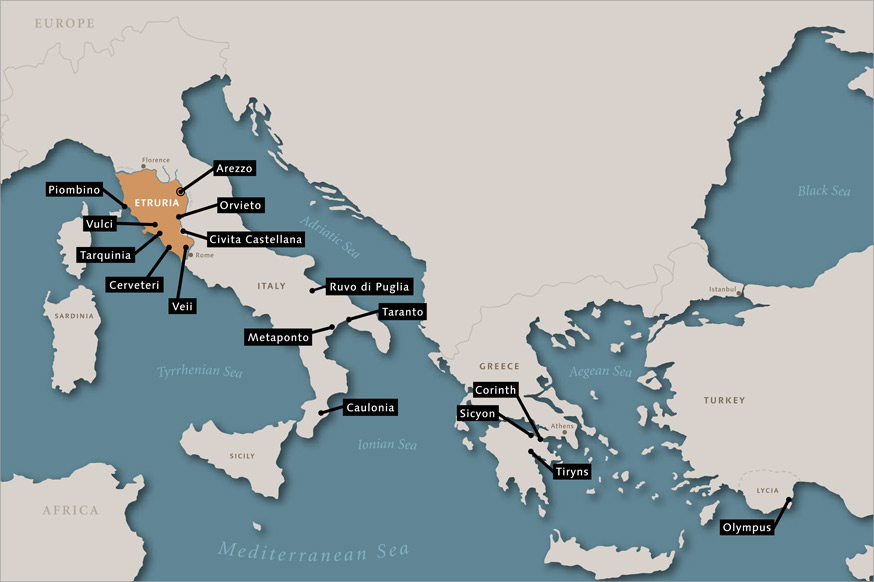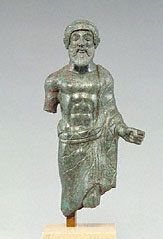 |
Calling themselves Rasenna, the Etruscans flourished in the region known as Etruria, between Rome and Florence, from the ninth to the first century B.C.
In a land rich with mineral resources that stimulated trade and cultural exchange, local craftsmen developed a vibrant narrative art that incorporated Near Eastern and Greek styles and motifs. A formidable maritime and commercial power, the Etruscans reached a peak of prosperity in the 500s and 400s B.C., expanding their territory to encompass much of the central Italian peninsula.
The Roman conquest of the city of Veii in 396 B.C. initiated a succession of military defeats. Etruscan communities were gradually assimilated into the Roman state, and their language and cultural identity were extinguished.
|
 |
Excavations over the past quarter century have revealed a wealth of information on Etruscan daily life, religion, and political organization. Much of the archaeological evidence comes from extensive cemeteries, known as necropolises, or "cities of the dead," surrounding the chief towns of Vulci, Tarquinia, Cerveteri, and Orvieto. On the basis of inscriptions, linguists have largely deciphered the Etruscan language, a non-Indo-European tongue written in a modified Greek alphabet.
Long considered enigmatic, the Etruscans are now recognized for their innovative architecture and elaborate cult rituals, which exerted a formative influence on early Rome.
The Etruscans are also renowned for their expert metalwork, including lavish jewelry, decorative reliefs, and cast figures.
In addition to the works on view in The Chimaera of Arezzo, numerous Etruscan objects are on display in the galleries of the J. Paul Getty Museum at the Getty Villa, including statuettes, jewelry, painted terracotta vessels, and bronzework.
|

